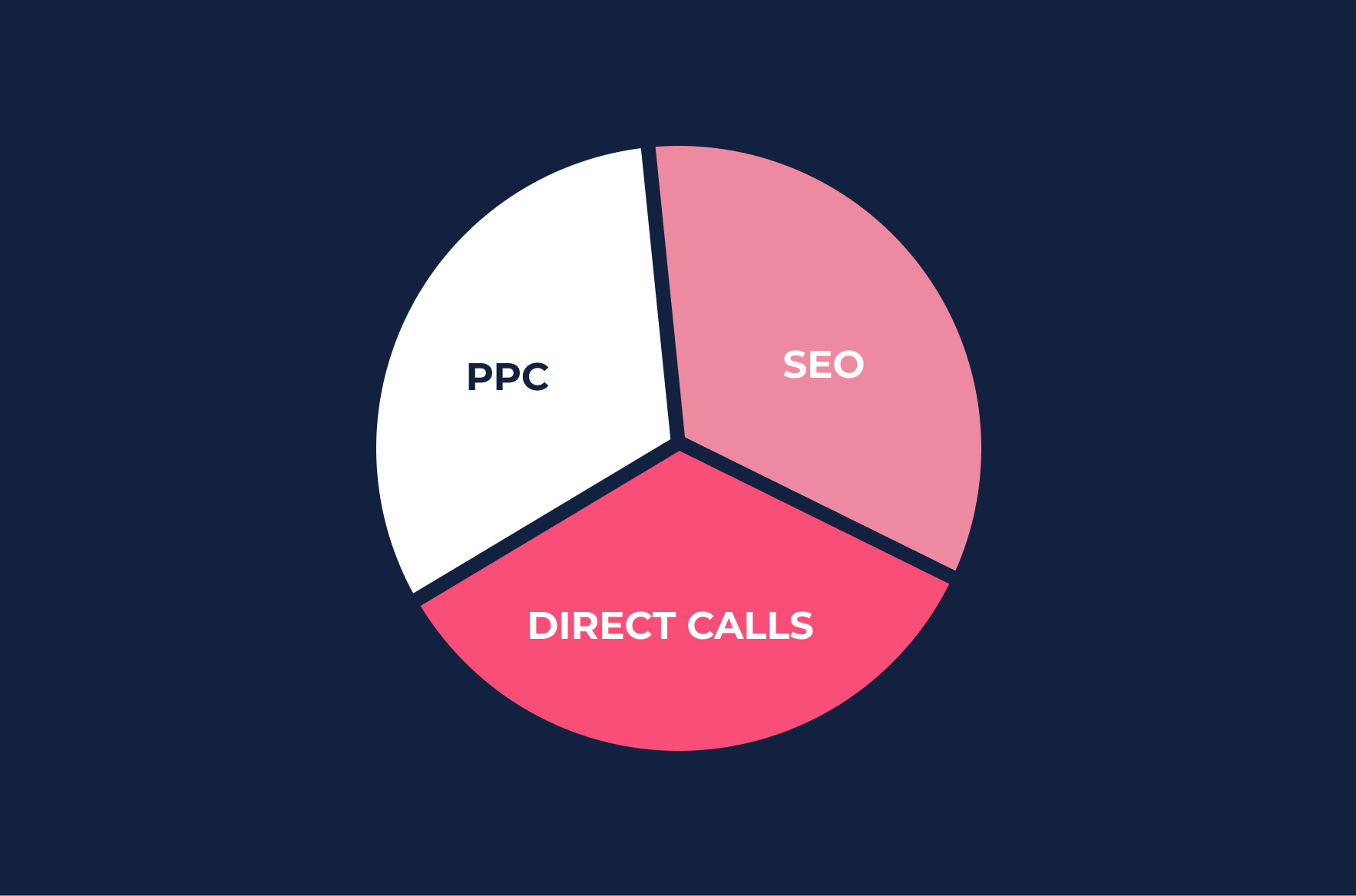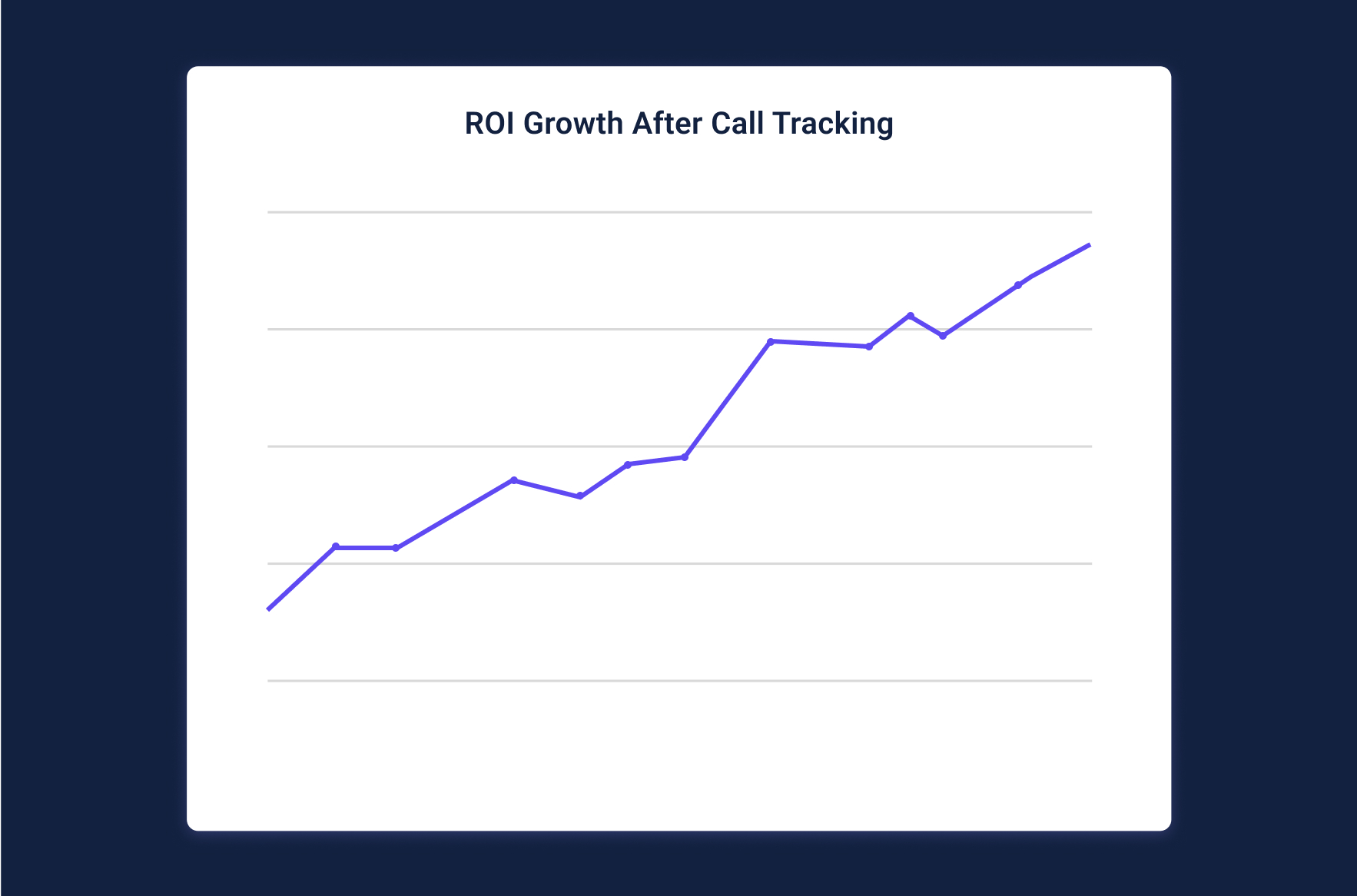Over 50% of dental practices can't calculate their call tracker ROI. Most dentists invest thousands in marketing, yet fail to track which efforts bring patients through the door.
Here's what makes this gap dangerous: 85% of new dental leads come from phone calls. Without proper dental call tracking, you're burning marketing budget on campaigns that might not work.
Only 3% of dental practices use call tracking systems, leaving the majority unable to measure their true dental ROI.
Call tracking for dentists isn't optional anymore.
You need to know which marketing channels drive actual patient appointments, not just website visits or social media likes. Too many practices chase lead quantity over quality, missing the real story behind their marketing returns.
But the problem gets worse:
- 21.3% of practices have no idea if their marketing works
- Most dentists can't connect marketing spend to new patient revenue
- Without tracking, you're essentially guessing where to invest next
Stop flying blind with your marketing budget. Learn what dental practices don't know about marketing returns and how the right tracking systems change everything.
What ROI Really Means for Dental Practices
Call tracker ROI reveals the complete picture of your marketing effectiveness. Most businesses treat ROI as a simple calculation, but successful dental practices understand it goes deeper than basic math.
Call tracker ROI reveals the complete picture of your marketing effectiveness. Most businesses treat ROI as a simple calculation, but successful dental practices understand it goes deeper than basic math.
Why ROI is more than just revenue
ROI in dentistry measures the overall effectiveness of your marketing efforts in attracting new patients and generating sustainable revenue. Your practice needs to account for multiple factors often overlooked: implementation costs, cash turnover, and opportunity costs.
The traditional ROI formula (Gain from Investment - Cost of Investment) / Cost of Investment x 100 only tells part of the story. A comprehensive approach considers:
- New patient acquisition numbers
- Revenue growth directly tied to marketing
- Patient acquisition costs
- Return on ad spend (ROAS)
- Conversion rates from leads to patients
Your dental ROI must balance short-term results with long-term value. Immediate profitability from specific campaigns matters, but ongoing revenue generated throughout a patient's lifetime drives sustainable growth.
Common misconceptions about dental ROI
Many practitioners think ROI only matters for major equipment purchases. Every marketing dollar deserves scrutiny. Over 50% of practices don't track their marketing results effectively. You might be wasting half your marketing budget without knowing it.
Implementation costs create another blind spot. Practices forget to include training, support, and operational adjustments required for new systems. Opportunity costs get overlooked, too—what else could you achieve with that same investment?
Timeline expectations trip up many practice owners. How to track ROI accurately requires patience. Marketing is "a marathon, not a sprint". Allow at least three months before evaluating campaign success.
How ROI connects to patient growth
Strong ROI directly correlates with patient growth through strategic marketing investments. Practices pursuing aggressive growth might initially spend 20% of forecasted revenue on marketing, gradually decreasing below 10% as collections increase.
ROI and growth extend beyond new patient acquisition to retention strategies. Acquiring new patients requires specific marketing expenses, but retention often costs less while delivering substantial returns. Balance acquisition with retention efforts to maximize your overall ROI.
A good dental ROI generally hits 300-500%. Implement proper call tracking for dentists and focus on both immediate returns and lifetime patient value. You'll develop a clearer understanding of what truly drives your practice's growth.
The Role of Call Tracking in Measuring ROI
Call tracking bridges the gap between your marketing spend and actual patient appointments. You finally get clear data on which campaigns fill your schedule and which ones drain your budget.
What is call tracking for dentists?
Call tracking assigns unique phone numbers to different marketing channels. When someone finds your practice through Google Ads, they see one number. Social media visitors see another. Direct mail recipients get a third number.
This technology, called dynamic number insertion (DNI), works automatically.
The system records which marketing source prompted each call, giving you precise data on campaign performance.
Modern call tracking captures:
- Marketing channel that generated the call
- Call duration and timing
- Caller location and demographics
- Website pages visited before calling
- Search keywords used to find your practice
How call tracking reveals hidden lead sources
Most practices waste money on underperforming channels while underfunding their best sources. Call tracking shows you exactly where quality leads originate.
You might discover your actual patient acquisition costs are $50 instead of $500. That's the difference between guessing and knowing.
Call tracking eliminates marketing guesswork. You see which specific ads, keywords, and campaigns drive appointments. Use this data to maximize your dental ROI by investing more in what works and cutting what doesn't.
Examples of call tracking in action
One dental group used call tracking to evaluate billboard locations. Three billboards generated substantial calls while two performed poorly. They cancelled the underperforming locations and immediately improved their marketing ROI.
Another practice implemented call tracking with coaching tools and increased new patient acquisition by 90%, adding over $600,000 in annual revenue. AI-powered systems let them track scheduled and missed calls across all channels in real-time, optimizing their marketing spend instantly.
Practices typically recover $1,500-$2,000 per week in appointments from previously missed calls. Call tracking isn't just measurement—it's revenue recovery.
Key Metrics Every Dental Practice Should Track

Track the right numbers to maximize your call tracker ROI. These metrics reveal which marketing efforts actually fill your appointment book and which ones drain your budget.
New Patient Acquisition
Successful practices acquire 10-25 new patients monthly. But raw numbers don't tell the whole story. Track net new patients: those who haven't visited in 18 months. This shows whether you're truly growing or just replacing lost patients.
Cost Per Lead and Cost Per Acquisition
Cost per lead (CPL) measures what you spend to generate one inquiry. Cost per acquisition (CPA) tracks the complete cost of converting someone into a patient. The medical industry average is $285 per lead, but optimized dental campaigns achieve $50 per lead or less. Lower costs mean better dental ROI.
Patient Lifetime Value
Patient lifetime value (PLV) represents the total revenue one patient generates over their relationship with your practice. General dentists average $10,000 per patient lifetime value. Calculate yours: average annual spending × retention years. A patient spending $500 annually for 10 years equals $5,000 lifetime value.
Call Conversion Rates
Your front office directly impacts dental call tracking success. Average practices convert 53% of new patient calls to appointments. Top performers hit 85%. Converting just 20 additional calls monthly can boost annual revenue by $243,750 to $487,500.
Website and Ad Performance
Monitor these digital metrics for effective call tracking for dentists:
- Bounce rates: 40-60% acceptable
- Click-through rates: 5% or higher achievable
- Conversion rates: 5-10% benchmark
- Geographic data: ensure local traffic focus
These analytics show which channels deliver the best returns, helping you optimize spending and improve results.
Tools That Help You Track and Improve ROI

The right software makes dental ROI tracking straightforward. You need tools that connect marketing spend directly to new patient revenue, not just website analytics that guess at your results.
Google Analytics and Call Tracking Integrations
Google Analytics 4 replaced Universal Analytics in July 2023, giving you better visibility into patient journeys across devices. This system tracks users as they move from laptop to mobile before calling your practice.
Integrate GA4 with call tracking systems using Dynamic Number Insertion. This combination shows exactly which marketing sources drive appointment calls . You'll see not just how patients found your website, but what they did before picking up the phone.
What This Means for Your Practice:
- Track patient behavior across multiple devices
- Connect website visits to actual phone calls
- Identify which pages convert visitors to callers
- Optimize your website based on call-driving content
CRM Systems for Dental Practices
Dental-specific Customer Relationship Management systems capture new patient data, track appointments, and automate communications.
Store all patient information in one secure location for personalized care that builds loyalty.
Choose CRMs that integrate with your practice management software. No double data entry required. When patients call, your team sees critical information like remaining benefits and patient history immediately.
ROI Dashboards and Reporting Platforms
Marketing dashboards monitor all your channels in real-time. Advanced platforms sync directly with your Practice Management System, showing exact production revenue for each converted lead. No guesswork or revenue estimates.
These visual platforms help you spot trends, optimize spending, and boost your dental ROI. See which channels generate the most traffic and conversions, then adjust your strategies accordingly.
Key Dashboard Features to Look For:
- Real-time revenue tracking by marketing source
- Cost per acquisition calculations
- Call conversion rates by channel
- Patient lifetime value metrics
A/B Testing to Refine Campaigns
Test two versions of your marketing materials to see which performs better. Marketing professionals use this approach for ad copy, images, and landing pages.
Test headlines, calls-to-action, and design elements systematically. Optimize your materials for maximum impact. This eliminates guesswork from your dental marketing strategy.
Start with simple tests like different phone numbers in your ads or varying your appointment booking language. Small changes often produce significant improvements in conversion rates.
Take Control of Your Marketing ROI

Your dental practice's marketing ROI doesn't have to remain a mystery. You now know exactly what separates successful practices from those that waste thousands on ineffective campaigns.
The tools exist. The strategies work. Practices using proper tracking systems recover thousands in missed appointments while cutting wasteful spending on underperforming campaigns.
Why wait? Start measuring your true marketing ROI now.
Start your 14-day free trial with TrackNotion today and transform your practice from marketing uncertainty to confident, profitable growth.
